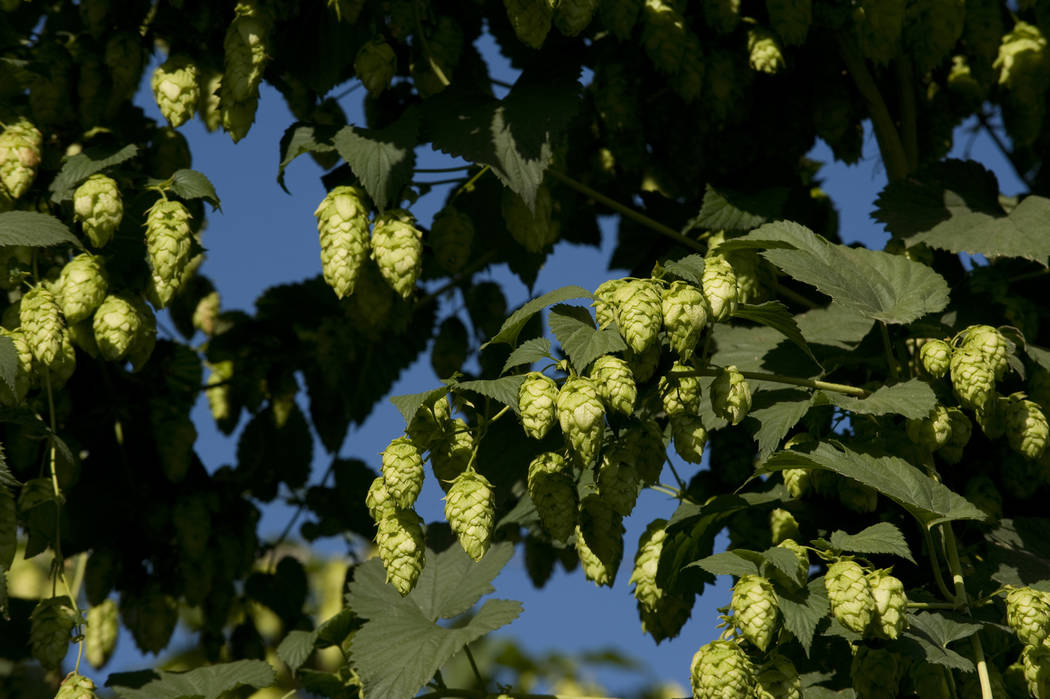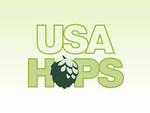
Recipe Development and Scaling
June 08, 2021
At some point in your brewing career, you will likely enter a situation in which you need to scale up one of your recipes to a larger brewery. This could be part of a product development process in which a small pilot batch is going to your production facility, or perhaps it’s an existing successful brew getting scaled to an even larger facility to meet the increased demand. Successfully transitioning the production of products from point A to point B is rarely easy and hardly ever expeditious, but it can be done. Scaling is easiest when it’s built on simplicity.
As a product developer, one thing I’ve learned over the years is to always think about scale when creating new brews. If I do this at 5 gallons, can I do the same thing at 5 barrels? 500? 5000? Some might argue that putting mental fences around the creative process right out of the gate is inherently suffocating. I understand that view, and admittedly, it crosses my mind from time to time, but I pretty quickly put it in the rearview mirror and carry on. One can never grow their success if the designed product is so complex and unique to a specific process or brewing location that it can’t be made anywhere else or at any scale beyond that on which it was designed. For me, it’s not “aim small, miss small” but rather “aim big, miss small.”
There are different iterations of the phrase, but I place a lot of value on the idea behind the saying “KISS.” Keep it Simply Simple. Limiting the amount of variables you have to manage inherently reduces the number of possibilities and chances unwanted/unknown things can happen.
For the malt piece, I have just a few simple goals: Extract, color, flavor, and marketing. Some of these can be the same, and the last one is a luxury but helpful if you can make it work. Extract is pretty simple; you have to have enough grain (or adjunct) to make gravity. There’s no way around that. Color often overlaps with flavor, but they can also function independently. With color, it’s not uncommon to use a very small amount of something that is visually potent, but immaterial from a flavor/aroma standpoint. Black malt is a good example of something that can add flavor if you use enough, but at very small addition rates it only contributes color. Alternatively, an addition of caramel malt at 10-20% of the grist will certainly give you both flavor and color. The last piece is marketing. If possible, try to use something, potentially in token amounts, that gives your commercial team something to talk about when they’re out promoting the beers. They’re more successful when they have something to share w/ customers/buyers that makes your beer sound better and different from the rest of the fray.
When it comes to the selection of yeast ask yourself if the brew really is dependent on that brand new strain that your favorite yeast supplier is selling. Why not take a yeast you already know well and have in-house? You can use more of it or less of it to influence fermentation velocity and yeast growth byproducts. Use it at a different temperature to get greater or lesser amounts of fruity esters. Give it more or less oxygen, or air, at the start of fermentation to impact both the velocity and esters. All of these things can lead to significant product differentiation using something you already have. Why struggle with the complexities that an additional yeast strain in the brewery brings if you don’t have to?
Hops, hops, hops. We all love us some hops, and I think we can all agree that American hop growers produce the best crops in the world. Use those American-grown hops in copious amounts. You’ll have to because, in today’s market, we all know that IPA’s rule the roost (let’s ignore hard seltzers……). In many ways, the selection of and usage of hops is similar to that of selecting malt types, minus the impact of color. Just like how the concept of extract from malt leads to successful attainment of gravity, the alpha acid variable in hops leads to successful attainment of IBU. While some brewers subscribe to the idea that the hops used early in the boil maintain their varietal signature in the final brew, let’s be honest and agree that they really don’t. All that signature goes right out the stack with the steam from the boil. For bitterness, the brewer should consider using the highest alpha hop they’re comfortable using and use it early at the start of the boil.
To get your hop aroma and flavor, you need to add the hops late in the brewhouse, or on the cold side during fermentation, conditioning, or aging. For simplicity, in late hot side or any cold side hop additions focus your attention on the concept of hop pounds per barrel and keep that ratio the same even as the alpha acid content varies. Use a static volume as well, something like the average brew size instead of trying to measure the volume exactly and adjusting the amount of hops added on a per brew basis. If the alpha on your aroma/flavor hops goes up, make a corresponding decrease to your early kettle IBU addition so the overall beer bitterness remains the same. Use the same process if the aroma hop alpha goes down: Make your bitterness corrections to the high alpha early boil addition and leave the aroma/flavor hops at a fixed pounds per barrel. Lastly, keep in mind that processes like slightly cooling the hot wort prior to the addition of aroma/flavor hops is not a very scalable process. The vast majority of breweries do not have this capability, so a brand built on this process may struggle with flavor match when made at a different brewery.
Now that you’ve created a wonderfully tasting beer recipe with a spartan approach to ingredient proliferation, here are some other things you’ll want to keep an eye on. For mashing, don’t focus solely on the duration of any rests. Keep in mind that ramp times and vessel filling times impact the extent of malt enzyme activity like temperature rests do. This is a concept I’ve seen overlooked with some regularity.
Another point of what could lead to significant variation is how yeast is pitched and counted. If you are targeting a yeast count of 15 million cells per ml, at what time, or at what volume do you determine the calculations? Is it after the first brew solely, or is it after the entire multi-brew fermenter is filled? Make sure everyone at the table defines terms. I’ve seen yeast viability reported as the percent of live cells and I’ve seen brewers report it as the number of dead cells too. Either works, but everyone needs to be working with the same definitions of the same terms.
Back to hops and something else you’ll want to keep an eye on is how the IBUs are being measured, and if there are any modifications in place to any standard method of analysis as described by the American Society Brewing of Chemists. Some organizations apply different multiplication factors to the absorbance value based on what kind of hop product was used to make that beer. Regular hops, pre-isomerized hops, and advanced downstream hop products can all be treated differently from an analytical reporting standpoint.
I think one of the biggest things IPA brewers need to keep in mind is that the widely used spectrophotometer-based IBU test really isn’t very good for beer with a lot of hops. Extensive late hot or cold side hop additions will introduce a lot of analytical noise to a BU result and brewers should be careful not to chase their tails looking for high levels of consistency based on a test result that isn’t measuring just the isohumulones. One thing I like to do is know exactly how many BUs are being contributed by the early boil hop additions. The BU results obtained prior to the addition of large volumes of aroma/flavor/dry hops are much more dependable and can be a useful benchmark that cuts through the analytical noise found in a dry hopped beer IBU result. Regardless of the BU number of a dry hopped beer, if it tastes bitter you can make kettle reductions based off of the known IBU value obtained prior to late/cold/dry hopping.
At the end of it all, scaling a brew from one brewery to another can be difficult, especially if the bill of materials is extensive and the production process is overly complicated. During product development, keep in mind the fact that the beer may need scaled to a larger facility if it really takes off. Moving something that has fewer moving pieces is always simpler. Building your brews so the flavor/aroma is the primary standout factor, as opposed to the process itself being the defining attribute, will make your chances of successful scaling and translation even greater. People revel in their arrival at their vacation destiny, not so much the planes, trains, and automobiles they took to get there. Beer shouldn’t be any different.
Author Bio
Joe Casey has been in the beer industry for over 25 years. He started with Widmer Brothers Brewing in 1995 as a keg washer and stayed with the company as it grew into Craft Brew Alliance. Across that time Joe provided leadership primarily in Brewing, both locally and eventually from a Corporate standpoint. He managed the technical aspects and procurement of all brewing ingredients and process aids, led the company’s brewing innovation and RnD efforts, and worked on flavor matching individual beers brewed in multiple breweries across CBA and non-CBA cross brewing partners. In 2008 Joe’s single hop pale ale recipe received a gold medal at the World Beer Cup, and the brew helped publicize the hop we now know as Citra. Joe is an ex officio of the American Malting Barley Association and has been a member of the Hop Research Council for a number of years. He also is a member of the American Society of Brewing Chemists and currently a district officer for the District Northwest Master Brewers Association of the Americas. Through the beer brand Omission Joe is probably best known to the industry for his innovative work that led to the establishment of an entirely new beer category; beers made with malted barley and crafted to remove gluten. He’s equally, or perhaps moreso, famous for his collection of Aloha shirts. Joe lives in Portland, OR and now works for the Anheuser Busch Zone Brewing Support team covering hop quality, craft, and cross brewing for North America.
Back
Liberty Building, 32 N 3rd St - Suite 408 \ Yakima, WA 98901 Mail to: P.O. Box 2885 \ Yakima, WA 98907 1.509.453.4749
